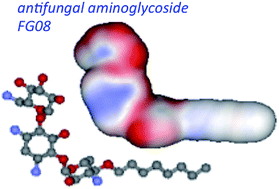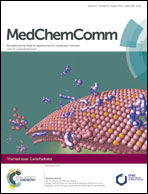Antifungal amphiphilic aminoglycosides
Abstract
The attachment of alkyl and other hydrophobic groups to traditional antibacterial kanamycins and neomycins creates amphiphilic aminoglycosides with altered antimicrobial properties. In this review, we summarize the discovery of amphiphilic kanamycins that are antifungal, but not antibacterial, and that inhibit the growth of fungi by perturbation of plasma membrane functions. With low toxicities against plant and mammalian cells, they appear to specifically target the fungal plasma membrane. These new antifungal agents offer new options for fighting fungal pathogens and are examples of reviving old drugs to confront new therapeutic challenges.


 Please wait while we load your content...
Please wait while we load your content...